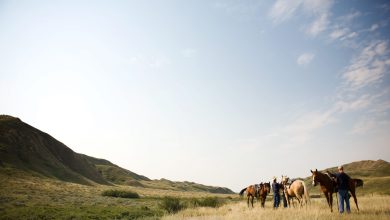12 Horse Skeleton Facts You Probably Didn’t Know
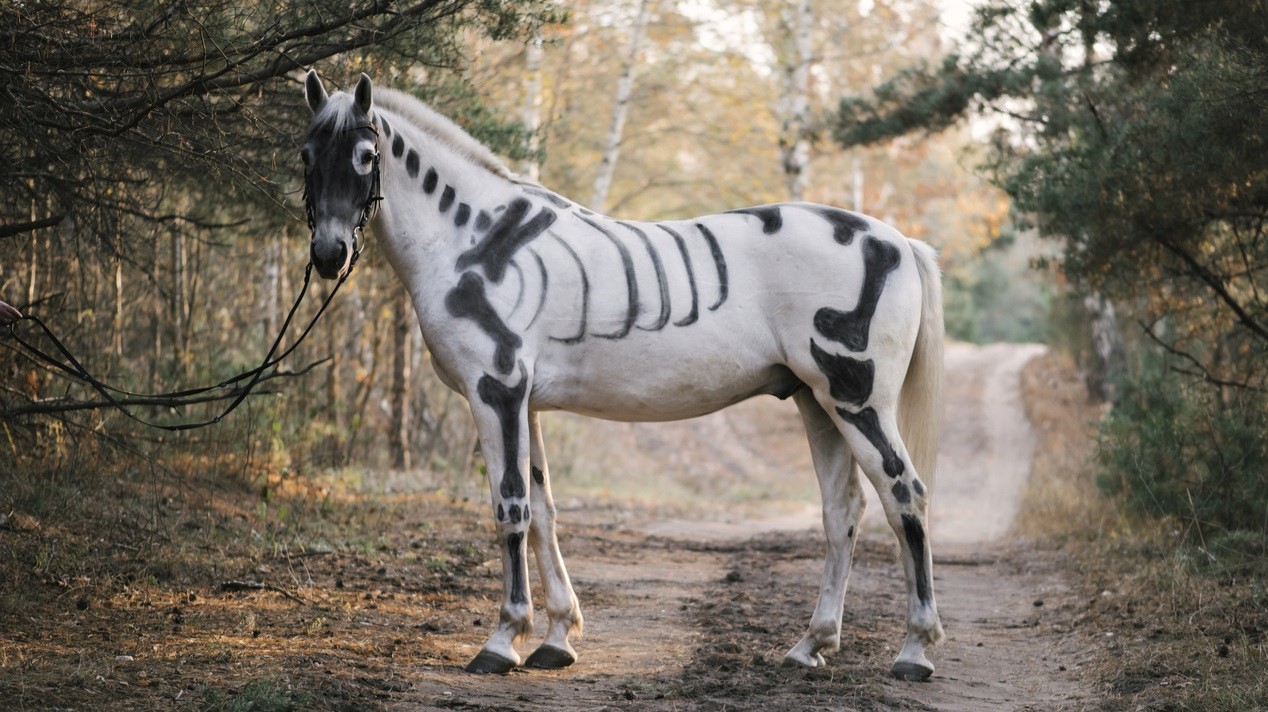
This post may contain affiliate links. We earn from qualifying purchases. Learn More
The skeleton of horses has gone through major evolutionary changes in the last 55 million years. As the ancestors of horses transitioned from living in forests to open grasslands, their skeleton elongated and they lost several toes. These changes increased the horse’s stride length and speed, allowing it to run away from predators.
As in other vertebrate animals, the skeleton has three main functions in horses: protecting essential organs, supporting soft tissues, and providing a framework to the body. The bones of the skeleton are held together by ligaments, while tendons attach muscles and muscle groups to bones.
Not unlike our own, the horse’s skeleton can be divided into two major sections: the axial and appendicular skeleton. The axial skeleton comprises the skull, ribcage, and vertebral column, while the appendicular skeleton refers to the front and hind limbs.
Horses are fascinating in every way, and so is their skeleton. In this article, we reveal some amazing facts about the equine skeleton that will make you fall in love with these animals even more!
1. Most Horses Have 205 Bones
On average, horses have 205 bones in their skeleton. Interestingly, this is only one less than the number of bones we have, which is 206.
Some horse breeds, however, have fewer or more bones in their skeleton than the majority. A prime example is the Arabian Horse, which often has fewer ribs, lumbar vertebrae, and tail bones than the average horse.
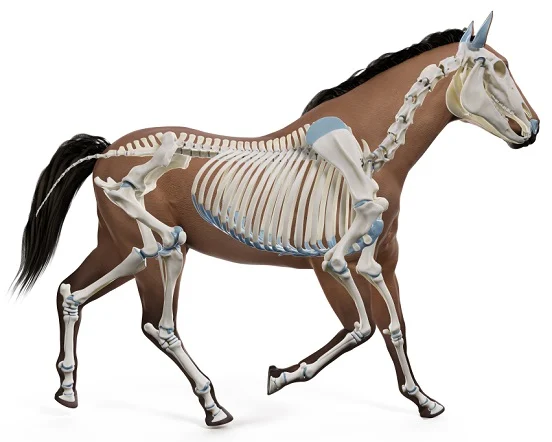
More specifically, these horses have 17 pairs of ribs instead of 18, 5 lumbar vertebrae instead of 6, and 16-17 tail bones instead of 18. These differences are the reason why Arabian Horses have a shorter torso and higher tail carriage than other horse breeds.
As a matter of fact, the number of tail bones frequently varies from horse to horse and can be between 15 and 25. The final number depends on the horse’s bloodlines and genetics.
2. A Horse’s Skeleton Makes Up Around 40% of Its Body Weight
It is estimated that a horse’s skeleton makes up nearly half of the animal’s body weight. Its absolute weight, however, depends entirely on the horse’s size.
In comparison, the skeleton of humans only constitutes around 15% of the total body weight. Talk about being big boned!
While an average 400-kg (880-pound) horse’s bones weigh around 160 kg (352 pounds), the bones of draft horses are considerably heavier.
The world’s tallest and largest horse was a Shire gelding called Sampson from Bedfordshire, England. Also known as Mammoth, he stood at an impressive 21.25 hands and weighed over a ton and a half (3,359 pounds). This means that his skeleton alone weighed around 610 kg (1,344 pounds), which is as heavy as a smart car!
3. A Horse’s Skull Has Twice As Many Bones As A Human’s
The skull of a horse is made up of 34 different bones, whereas a human skull only has 14. Since horses have a very different head shape and size to us, it is understandable why their skull has more bones. Coincidentally, the number of major bones in the horse’s skull is also 14.
Similar to other animals, the bones of the equine skull make up the cavities that hold the brain, eyes, mouth, and nose. Most of these bones are fused together, with the only moving part being the mandible or jaw.
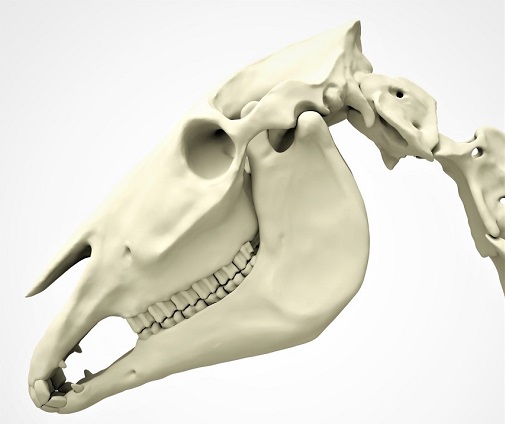
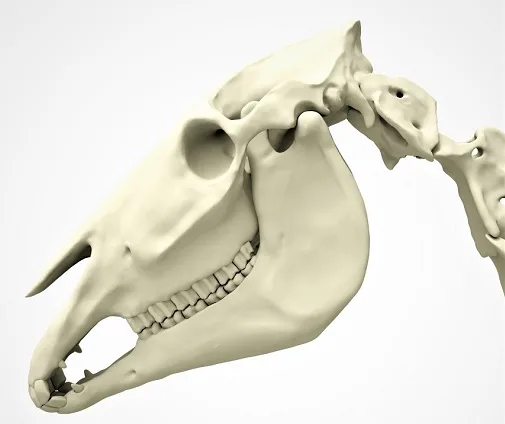
An interesting difference between the skulls of humans and horses is the position of the orbits. In humans, the orbits are front-facing, which gives us excellent binocular vision. Meanwhile, in horses, the orbits are positioned on the side of their skull, allowing them to see almost 360 degrees around themselves.
The only blindspots a horse has are directly in front of and behind the head. To stop horses from bumping into things they can’t see, nature has given them long sensory hairs on the muzzle. Hence why it’s important to keep a horse’s whiskers on and not trim them for aesthetic purposes.
4. Male Horses Usually Have More Teeth Than Females
As it happens, the maximum number of teeth a horse can have is gender-dependent. Many, but not all, male horses have canines on either side of their upper and lower jaw, giving them a total of 40 teeth.
Since canines are absent in females, they can only have a maximum of 36 teeth. However, the teeth of both male and female horses take up more space in their skull than their brains!
Another fun fact about horses’ teeth is that they come in five different shapes and two sets (baby and permanent). They also never stop growing throughout the animal’s life, which is regular dental care is important.
You’ve probably heard before that it’s possible to estimate a horse’s age by looking at its teeth! This is not a myth, and the younger the horse is, the more accurate the estimation will be.
5. Horses Have No Collar Bones
Contrary to many vertebrate animals, horses lack a collarbone or clavicle in their skeleton. In other vertebrates like humans, collarbones attach the arms and shoulder blades to the body and provide stability to the upper torso.
Whereas, in horses, having a collarbone would limit their stride length and efficiency as a runner. They also wouldn’t be able to fold their legs up when jumping high.
Instead of a collarbone, horses have their forelimbs attached by a powerful group of muscles and tendons called the thoracic sling. This means that their front legs do not directly attach to the vertebral column like the hind legs.
The thoracic sling is made possible by the broad flat surfaces of the shoulder blade and the sternum that provide ample attachment sites for muscles. The three main thoracic sling muscles are the trapezius, serratus ventralis, and pectorals.
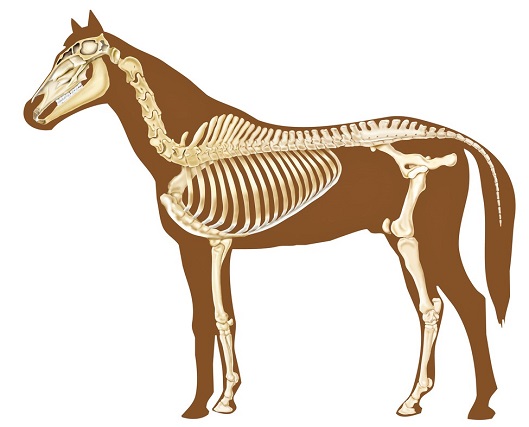
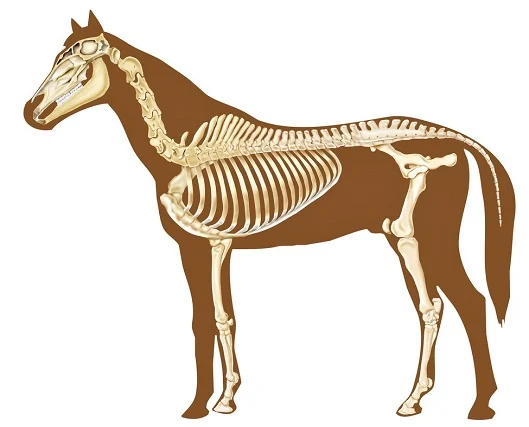
6. Shoulder Angle Determines A Horse’s Athletic Ability
The angle or slope of the shoulder is often considered when assessing the conformation of riding horses. By “shoulder angle”, we mean the angle of the horse’s shoulder blade (scapula) in relation to the bone of the upper arm (humerus).
Horses with more angled shoulders have a higher potential of succeeding in disciplines that require speed and athleticism. This is because the more angled the shoulder joint is, the less concussion will be transferred to the structures of the lower limb.
Therefore, an angled or sloping shoulder is a sign of good conformation in riding horses. Horses with straighter, steeper shoulders tend to have a shorter stride length and jarring gaits. On the other hand, steep shoulders are typical in draft horses that have been bred for pulling heavy goods and machinery.
7. The Horse’s Withers Are Made Up Of Thoracic Vertebrae
The withers are the highest point of the horse’s back and are found at the junction of the neck and back. In most horse breeds, the withers are used as a starting point when measuring a horse’s height.
If we look at the equine skeleton, we will see that the withers are made up of the long and narrow structures of the thoracic vertebrae, starting from the 5th to the 9th. The main purpose of the withers is to provide attachment points for the muscles and tendons of the neck and back.

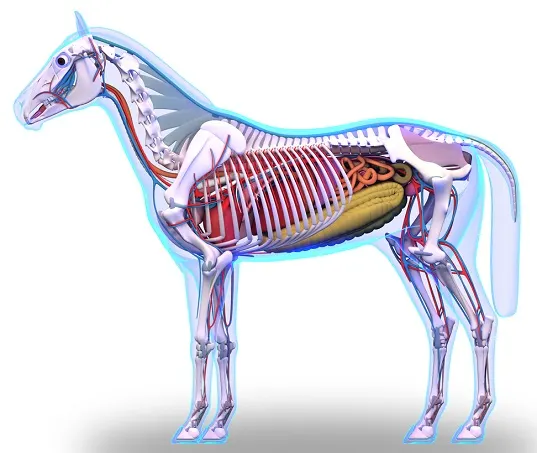
8. The Horse’s Back Bones Take Up To 6 Years To Mature
Experts agree that the last structure to mature in the horse’s skeleton is the vertebral column. It takes 6 years on average for the growth plates of backbones to fuse, which is an important consideration when breaking young horses.
According to Dr. Deb Bennett, the horse’s spine takes at least 5 and a half years to fully mature, although this varies with height and gender. Male horses usually need an additional 6 months to complete development. Moreover, tall horses with long necks might not be mature until they are 8 years old.
Unfortunately, it is still common practice in the horse world to ride 2- and 3-year-olds. This is a major welfare issue, since the horse’s skeletal system is still in development at this age. As a general rule of thumb, the longer you wait with riding a young horse, the longer their working life is going to be.
9. Horses Stand On Just One Digit
Like donkeys and zebras, horses also stand on a single toe that we see as the hoof. Believe it or not, this “toe” is the equivalent of the third digit on our hands and feet!
However, horses have not always been this way. 55 million years ago, their ancestors used to have four toes on the front feet and three toes on the rear. Over time, all but the middle toes shrunk and became the vestigial remnants we see today.

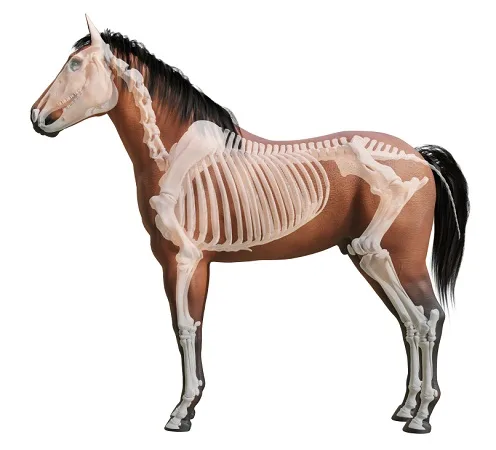
Many equestrians are aware that the splint bones on either side of the cannon bone represent what’s left of the 2nd and 4th toes. However, anatomist Nikos Solounias and colleagues believe the ridges on the tip of splint bones are actually the remains of the ancient 1st and 5th digits.
While splint bones are no doubt fascinating, they can also cause health problems in the modern horse. A splint bone fracture or inflammation can result in painful bony protrusions or “splints” appearing on the horse’s leg.
10. What Most People Call The Horse’s “Knee” Is Equivalent To Our Wrist
In the horse world, calling the large round joint on the horse’s front legs their knee is common. However, in reality, this is called the carpus or carpal joint, which is equivalent to our wrist. It is made up of 7-8 bones arranged in two rows to form three joints.
Whereas, the “true” knee of horses is located high up on the hind limbs by the flank. Perhaps you have heard of the anatomical term “stifle” before? Stifle or femoropatellar joint is what they call the horse’s knee in medicine and science.
You can easily observe the patella of the knee protruding as the horse moves. If you watch closely, you’ll notice that the knee flexes in synchrony with the hock. This is because the two joints are connected by two tendinous muscles that make up the horse’s stay apparatus.
11. The Femur Is The Longest Bone Of The Horse Skeleton
The femur is the long and thick bone between the horse’s knee and hip. As in many vertebrates, it is proportionately the longest bone of the horse’s skeleton. Naturally, its exact length varies with the horse’s age, gender, and breed.


In contrast, the smallest bones of the equine skeleton are found in the inner ear. These tiny structures are called malleus, incus, and stapes, which is Latin for “stirrup”. They play an essential role in the horse’s hearing by transmitting sounds to the inner ear.
12. A Female Horse’s Pelvis Limits The Size Of Her Foal
The pelvis is the largest among the flat bones of the horse’s skeleton. Understandably, the pelvic cavity is greater in female horses than in males to allow for the passage of a foal.
To ensure the survival of both mare and foal, the size of the mare’s pelvis limits how large the foal can grow. This makes it possible for the mare to deliver the foal of a bigger stallion. However, it is still not recommended to breed a mare to an overly large stallion as complications can arise.
Also, take our fun horse anatomy quiz to see how much you’ve learnt!
